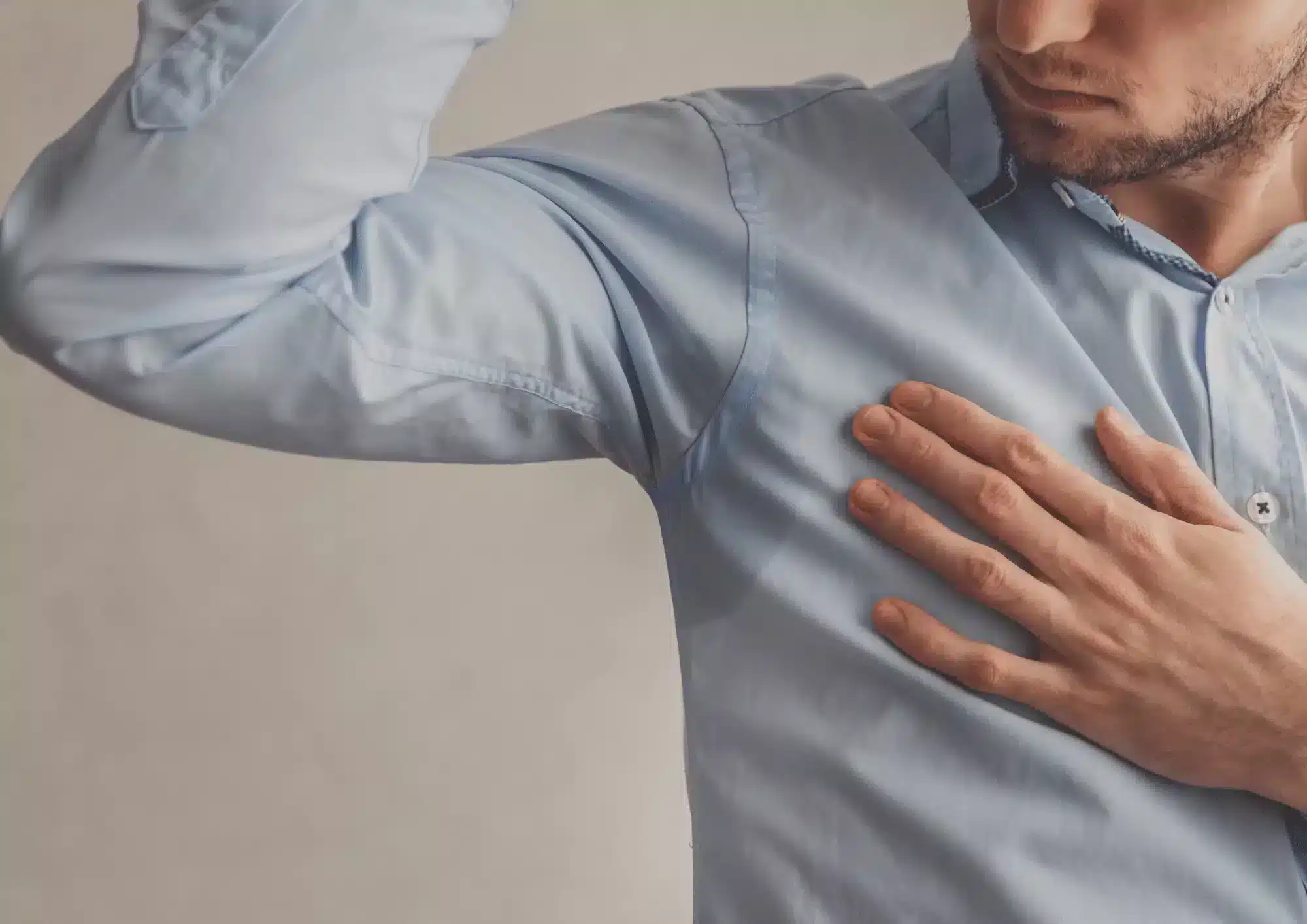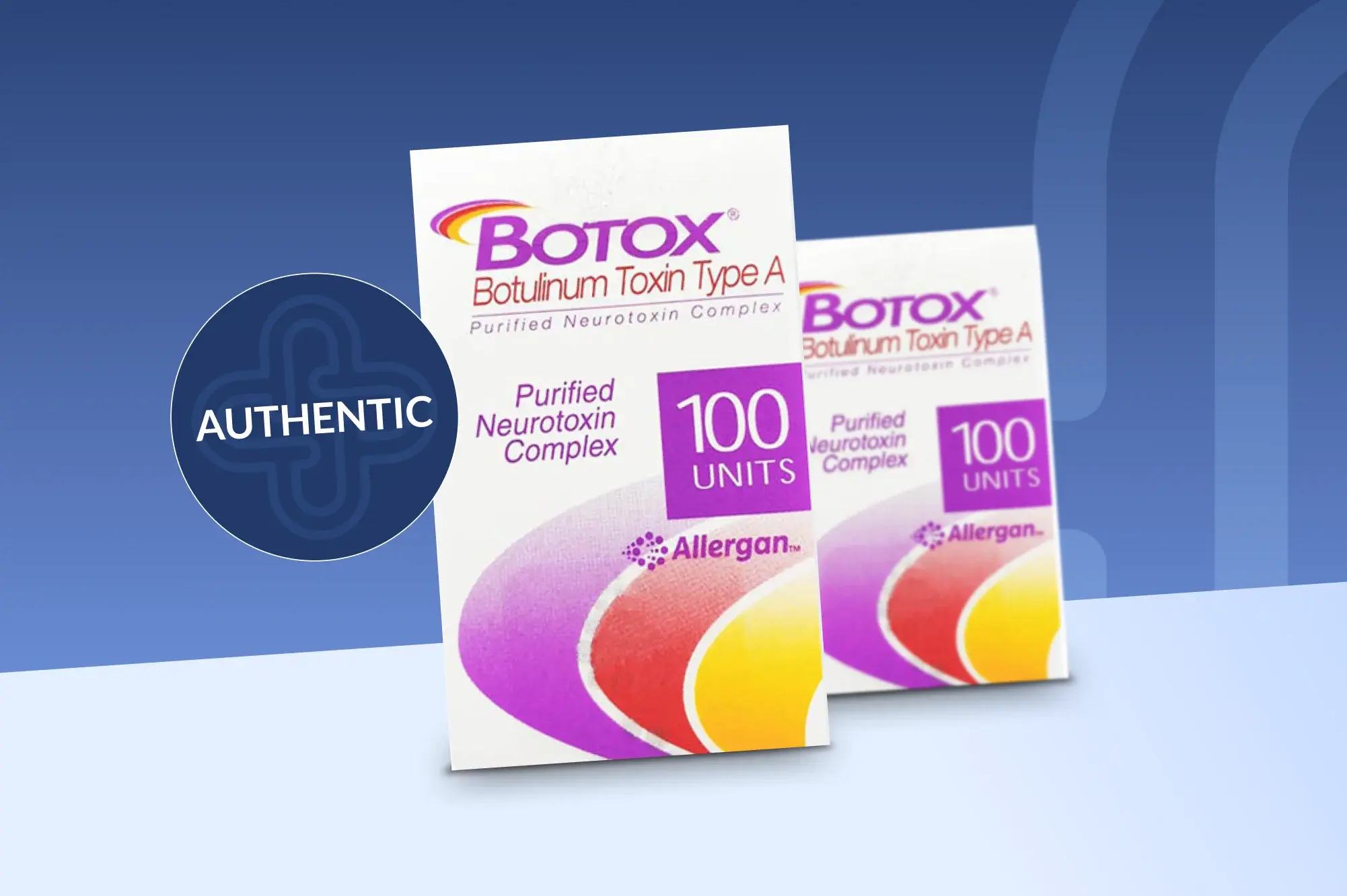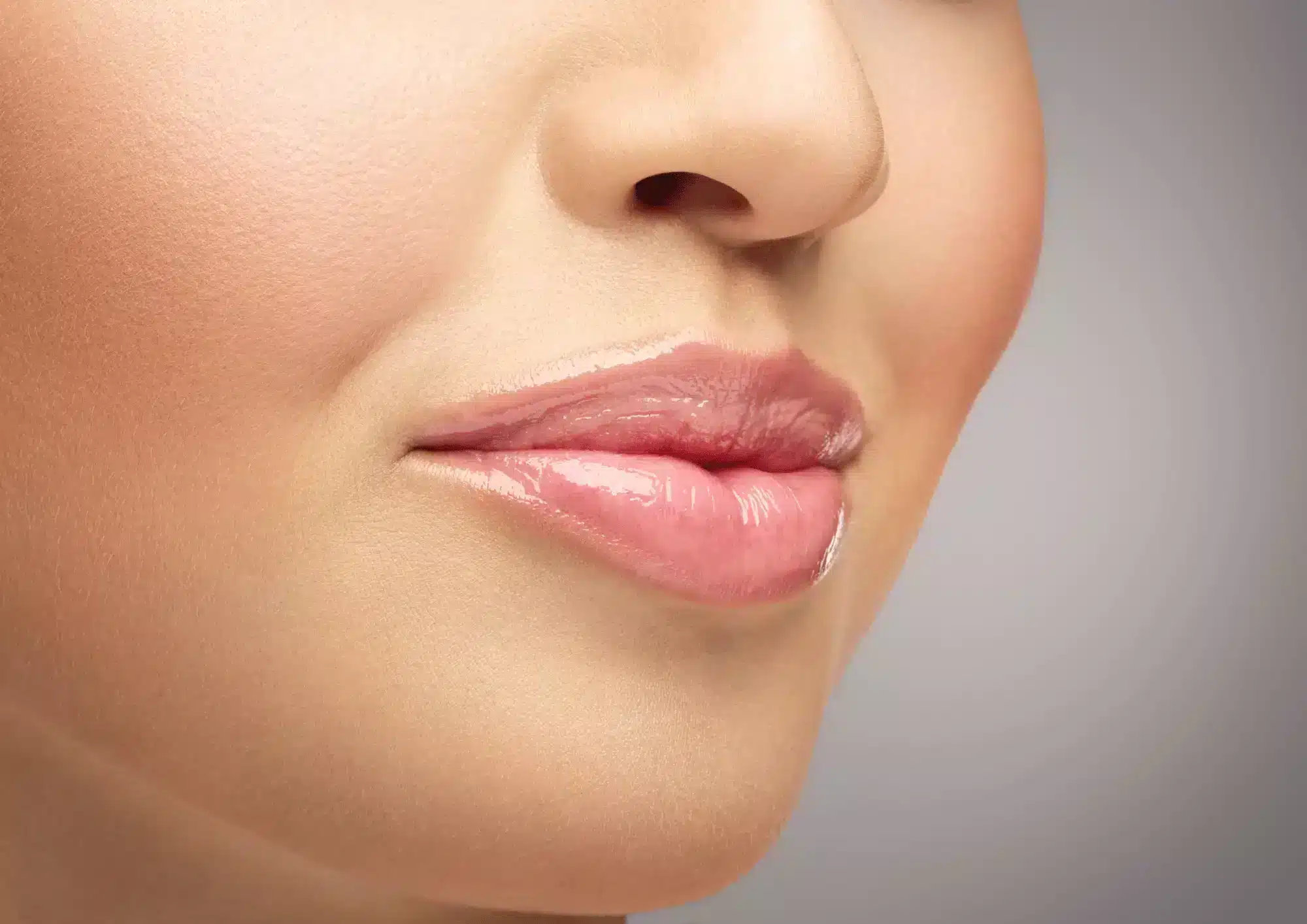Sweating is a normal bodily process that is an important means of thermoregulation. In humans, the production and secretion of sweat occurs from the sweat glands, which are located in the skin. That being said, some patients would prefer not to deal with the pitfalls of perspiration, such as unsightly sweat marks, body odor, and stained shirts. For these individuals, Botox injections may be a suitable form of treatment.
Botox for armpits vs Botox for hyperhidrosis
Botox consists of type A botulinum toxin derived from Clostridium botulinum, an anaerobic bacterium. While it is primarily known as an anti-wrinkle treatment, Botox has a multitude of other indications, one of which is the treatment of excessive underarm sweating or severe primary axillary hyperhidrosis. Primary axillary hyperhidrosis is defined as idiopathic, excessive sweating lasting for six months or more. This sweating has at least two of the following features: impairment of daily activities, a known family history, bilateral symmetric sweating, frequency greater than once a week, onset before age 25, and cessation of focal sweating while asleep. In a clinical setting, primary hyperhidrosis is diagnosed by how severely the excessive sweating impacts a patient’s daily life.
Botox been life-changing for many patients who experience this condition. That being said, many patients who do not have this condition still have the procedure done, as it helps them to stay dry. Botox treats sweating by blocking the release of acetylcholine from skeletal and autonomic cholinergic nerve endings, thereby causing the chemical denervation of the eccrine sweat glands.
What to expect with Botox for armpits
The procedure starts with marking out the area of treatment. The template for treatment can be defined by the hair-bearing area. Typically, the dose given to a patient is 50 U per underarm for a total of 100 U. A topical numbing cream is applied to the area to be treated, or lidocaine may be added to the reconstituted Botox solution for the patient’s comfort. Injections should be administered in a grid pattern. Each injection site has a circular area of effect of approximately 2cm in diameter, so the injection sites should be spread evenly across the treatment area accordingly.
Prior to treatment, Botox is reconstituted with sterile, preservative-free 0.9% sodium chloride for injection by drawing up the appropriate volume. The typical reconstitution recommendation for the underarms is to reconstitute 50 U in 2ml diluent (or 3ml for larger treatment areas) per underarm, to produce 40 injections per ml of injection solution. Ensure that the solution is mixed by rotating the vial. For the treatment of sweating, Botox is administered intradermally. Inject each Botox dose to a depth of about 2mm at a 45° angle to the skin surface, bevel side up. The injection should be done in one smooth motion to minimize trauma to the area. Approximately 0.05ml of Botox solution is deposited per injection site, and 1015 injections are performed.
Side effects of Botox are usually minimal and limited to reactions to the injection such as bruising, redness, tenderness or swelling. Patients should be monitored while in the clinic for any signs and symptoms of adverse events, and practitioners are encouraged to follow up with patients two weeks after treatment to confirm response to treatment. After treatment, the majority of patients will notice an improvement in their symptoms within the first week. Results last anywhere in between three to six months after treatment but will vary from individual to individual. It should be noted that repeat treatments may result in the development of antibodies to Botox, thus reducing the effectiveness of treatment. In one study, the authors noticed that patients who have had more than four treatments returned with increased frequency for subsequent injections.
Am I a good candidate?
Please note that not everyone is a suitable candidate for this treatment. The practitioner should not offer Botox injections to patients who have hyperhidrosis secondary to an underlying disease, who have undergone previous surgery to remove their sweat glands, or who have severe blood-clotting disorders. Patients who have an infection at the injection site or a systemic infection are asked to delay treatment to a time after the infection has cleared. The practitioner should also avoid treating patients who have an existing medical condition that may interfere with neuromuscular function, such as myasthenia gravis, amyotrophic lateral sclerosis, or Eaton-Lambert syndrome. Lastly, patients who are pregnant or breastfeeding should be excluded from treatment as well.
All in all, Botox has proven itself through years of clinical use to be a highly effective treatment for underarm sweating, with a high patient satisfaction rate. As a minimally invasive, well-tolerated treatment with semi-permanent results, Botox is a convenient way to go sweat-free this summer.








